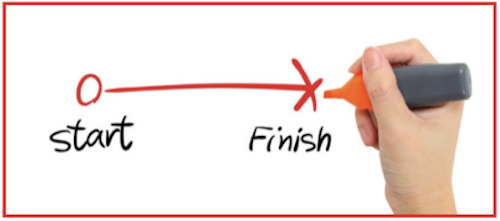 It took almost four months, two dermatologists, and six days in a hospital bed to be “officially” diagnosed with pityriasis rubra pilaris. It took only four more days for me to conclude that I had embarked on a three to five-year journey that would ultimately end with remission. Fortunately, my journey lasted only 20 months. I was med-free and symptom-free. Let’s start with what we know about PRP: every PRP journey is unique. It has taken me years understand and fully appreciate that “med-free and symptom-free” is not the norm. I have also concluded that remission is absolutely in the eye of the beholder. The definition of remission can include “symptom-free with meds”, “remission with remnants”, and the least technnical variation: “I finally have my life back”.
It took almost four months, two dermatologists, and six days in a hospital bed to be “officially” diagnosed with pityriasis rubra pilaris. It took only four more days for me to conclude that I had embarked on a three to five-year journey that would ultimately end with remission. Fortunately, my journey lasted only 20 months. I was med-free and symptom-free. Let’s start with what we know about PRP: every PRP journey is unique. It has taken me years understand and fully appreciate that “med-free and symptom-free” is not the norm. I have also concluded that remission is absolutely in the eye of the beholder. The definition of remission can include “symptom-free with meds”, “remission with remnants”, and the least technnical variation: “I finally have my life back”.  For most PRP patients and caregivers, a diagnosis of pityriasis rubra pilaris is life-altering. Even before I started treatment I wanted to know how long my PRP would last. Dr. Google and Dr. Yahoo reaffirmed that it would be three to five years. However stated, the objective of a PRP treatment plan is remission. Yet, neither PRP-savvy dermatologists nor the PRP global community of patients and their caregivers have an agreed upon a definition of remission. Does remission mean “no symptoms with no PRP meds? Or is it just “no PRP symptoms”. Or is it something else, entirely. I would like to find out.
For most PRP patients and caregivers, a diagnosis of pityriasis rubra pilaris is life-altering. Even before I started treatment I wanted to know how long my PRP would last. Dr. Google and Dr. Yahoo reaffirmed that it would be three to five years. However stated, the objective of a PRP treatment plan is remission. Yet, neither PRP-savvy dermatologists nor the PRP global community of patients and their caregivers have an agreed upon a definition of remission. Does remission mean “no symptoms with no PRP meds? Or is it just “no PRP symptoms”. Or is it something else, entirely. I would like to find out.  Here’s another question obvious related to remission: “How long does it take to get from ONSET to REMISSION?” We can easily calculate duration based on two separate datapoints. But, how do we know when we are “in Remission” on just on the off ramp.
Here’s another question obvious related to remission: “How long does it take to get from ONSET to REMISSION?” We can easily calculate duration based on two separate datapoints. But, how do we know when we are “in Remission” on just on the off ramp.
✽ Onset date: month/year ✽ Remission date: month/year
My onset date was early August 2012 and I was “symptom free AND med free” by early April 2014. That’s 20 months. However, I was med free in December but had some lingering issues, e.g., hair and fingernails. One could say I was “in remission with remnants”. By some standards, my duration could be considered as short as 16 months. The real problem is in developing accurate metrics. It’s all about comparing apples and oranges. We need a universal definition of Remission — either apples OR oranges. As of April 16, 2019, the PRP Global Database maintained 2,817 patient profiles of which 572 list REMISSION as the current status. Unfortunately, only 297 include both an ONSET DATE and REMISSION DATE.
❏ The MANY definitions of remission?

❏ PRP Feedback, December 2017 (59 comments)
❏ In the Queue: Endgame (Remission)
 Additional articles to ponder the subject of the ENGAME and REMISSION.
Additional articles to ponder the subject of the ENGAME and REMISSION.
❏ What are the issues related to remission?
❏ What is the long-term outlook for a PRP patient by type?
❏ I hate holly more than PRP — A “Remissioners” Retrospective
❏ PRP Feedback, December 2017 (59 comments)
❏ In the Queue: Endgame (Remission)
❏ Endgame Feedback (Murray R)
Please use “Leave a Reply” below to share your insights and observations related to REMISSION or ENDGAME. Here are some questions to ponder:
❏ Does PRP leave our bodies completely – or do minute elements remain to reignite further down the line?
❏ Once I reach remission, should I expect relapses and setbacks?
❏ If my version of PRP has not subsided in 2-3 years, how much longer could I have it and what should I do?
❏ What are the chances of my PRP returning?

